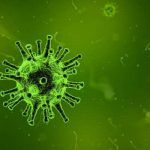You don’t have to be pregnant to harbour cravings for types of food. Some people can’t open a packet of Hob Nobs and just nobble one or two – they don’t stop until the packet is empty. For some it’s Reese’s Peanut Butter Cups (aka food of the devil) while others can’t keep their hands off any choccy bikkies lying around.
But what about cheese? There was a story going around the Internet a few years ago that cheese was as addictive as crack cocaine. Like many of these tall tales, it was fairly quickly debunked. Not everybody found out that it was early fake news like the idea that mobile phones could cook popcorn. It still pops up in discussions from time to time.
What’s the culprit in cheese that makes it so more-ish?
Casein (pronounced kay-seen) is what holds cheese together and makes it stretchy. The milk of all mammals contains this valuable protein, including humans. Cow’s milk is about 3% casein.
It’s in all dairy products but exists in especially high concentrations in cheese.
Casein has protein fragments (peptides) called casomorphins, which are opioids. They attach to the same receptors in our brains that drugs like crack cocaine do. Obviously not in the same volumes or with the same dramatic effect, but cheese does give pleasure.
That’s what makes it so more-ish.
A clinical study at University of Michigan published in 2015 investigated the science behind which foods seem addictive. Some journalists picked up on the casein correlation with pleasure and headlines appeared intimating that cheese is as addictive as crack cocaine. That’s simply untrue.
What other foods are addictive?
There is no definitive list but science suggest that the Top 4 “addictive” foods are
- Sugar
- Chocolate
- Meat
- Cheese
No surprises there then!
Vegan cheese is a real thing!
Just in passing, you may be interested to know that casein and other proteins can be made from yeast – close enough to the DNA of cow’s milk to meet all the biochemical requirements for real, stretchy and melt-able cheese. And just as pleasurable, it would seem.
The Real Vegan Cheese project in California reckons it will help reduce our dependency on cattle and make cheese production more sustainable.
References
Barnard,N. MD. Brain Hijackers: The 4 Most Addictive Foods. Dr. Oz. Retrieved from https://www.doctoroz.com/article/brain-hijackers-4-most-addictive-foods
Brookshire, B. (Oct 2015). No, cheese is not just like crack. Headlines joked about cheese addiction, but the real science is far more complex. Science News. Retrieved from https://www.sciencenews.org/blog/scicurious/no-cheese-not-just-crack
Davis, R. (Oct 2015). No, cheese is not really ‘like cocaine’. Time. Retrieved from https://time.com/4090741/cheese-addictive/
McLees, H. (2019). Casein: The Disturbing Connection Between This Dairy Protein and Your Health. https://www.onegreenplanet.org/natural-health/casein-dairy-protein-and-your-health/
Pharmacokinetics. Wikipedia. https://en.wikipedia.org/wiki/Pharmacokinetics
Real Vegan Cheese. https://realvegancheese.org/
Schulte, E., Avena N, Gearhardt, A. (Feb 2015). Which Foods May Be Addictive? The Roles of Processing, Fat Content, and Glycemic Load. Public Library of Science (PLOS). Retrieved from https://journals.plos.org/plosone/article?id=10.1371/journal.pone.0117959










